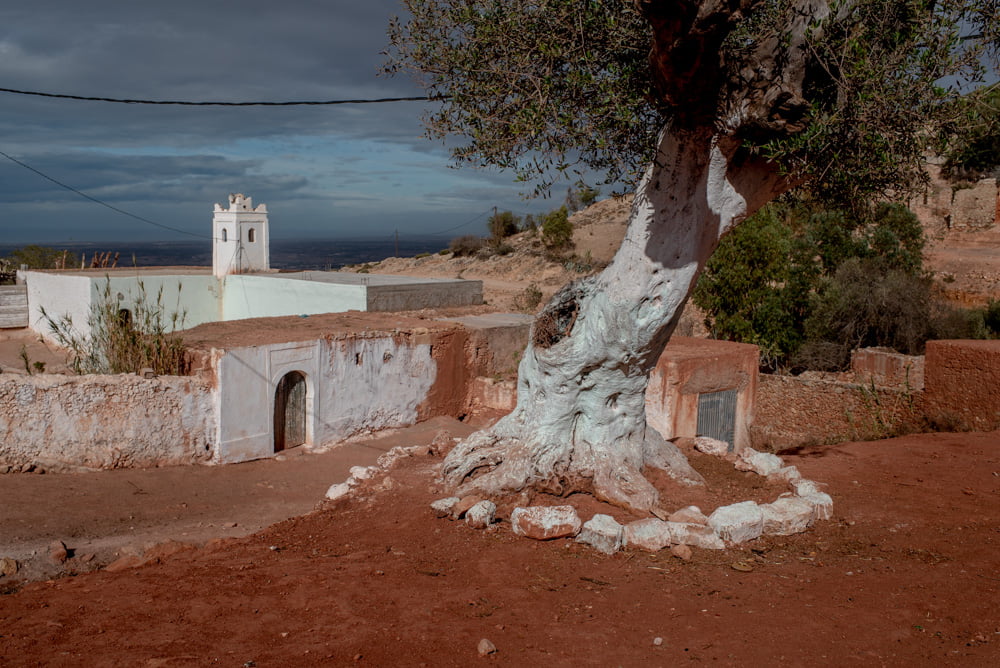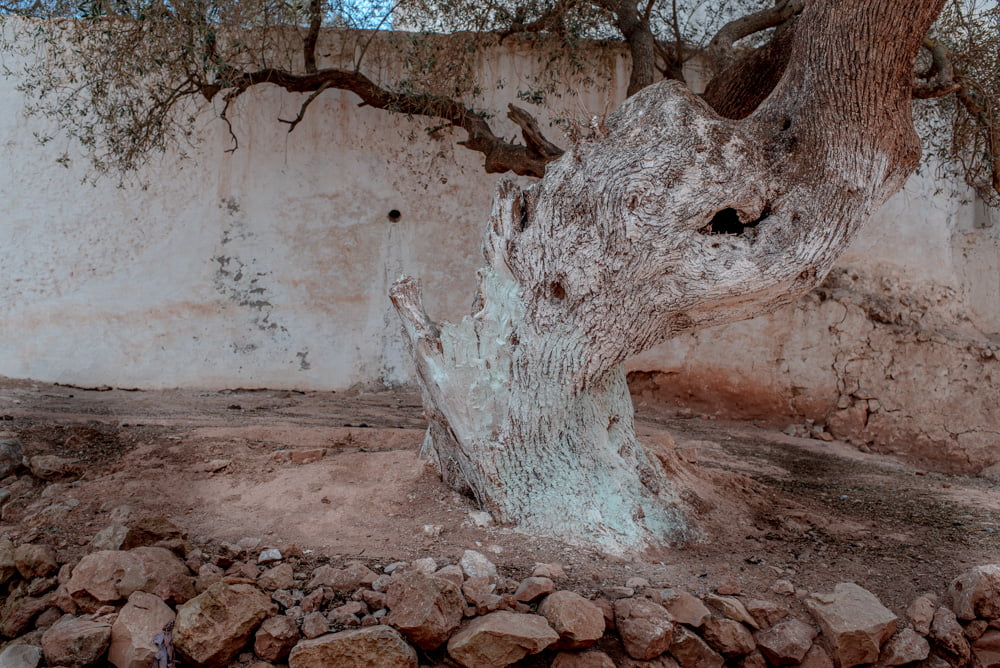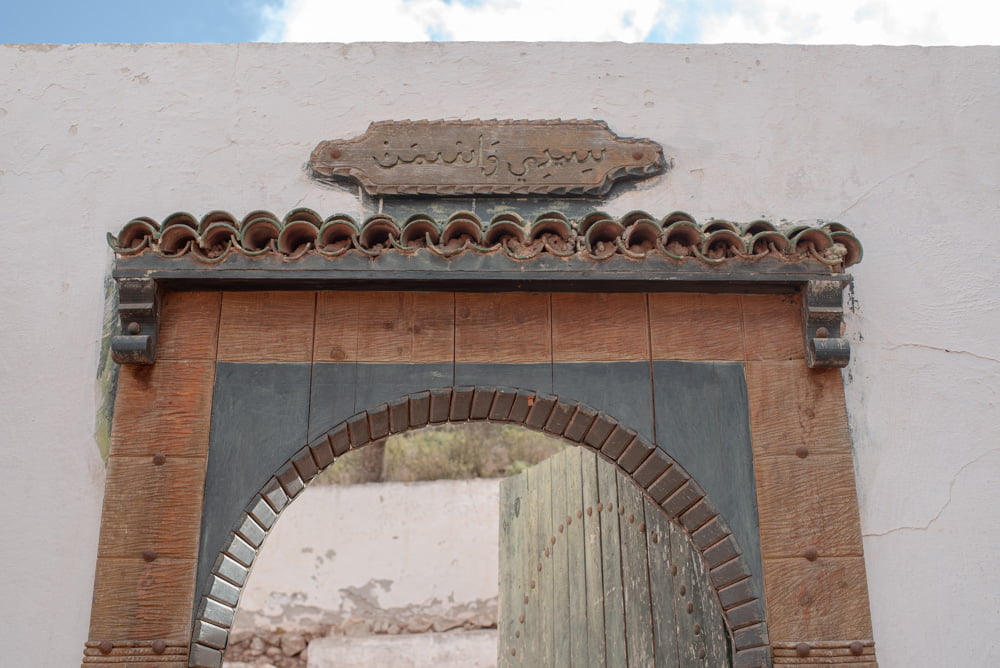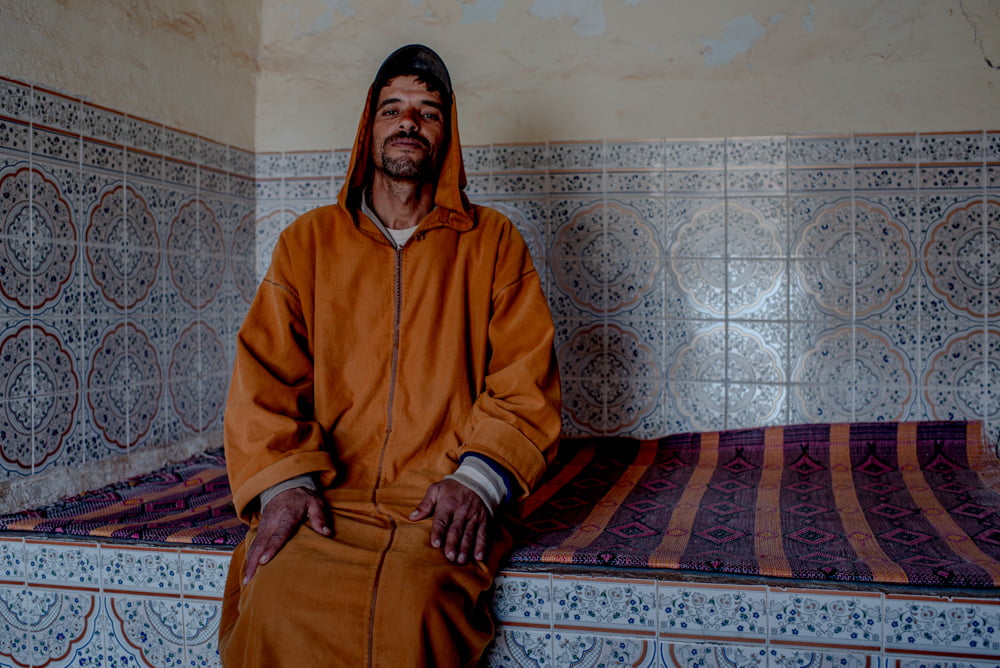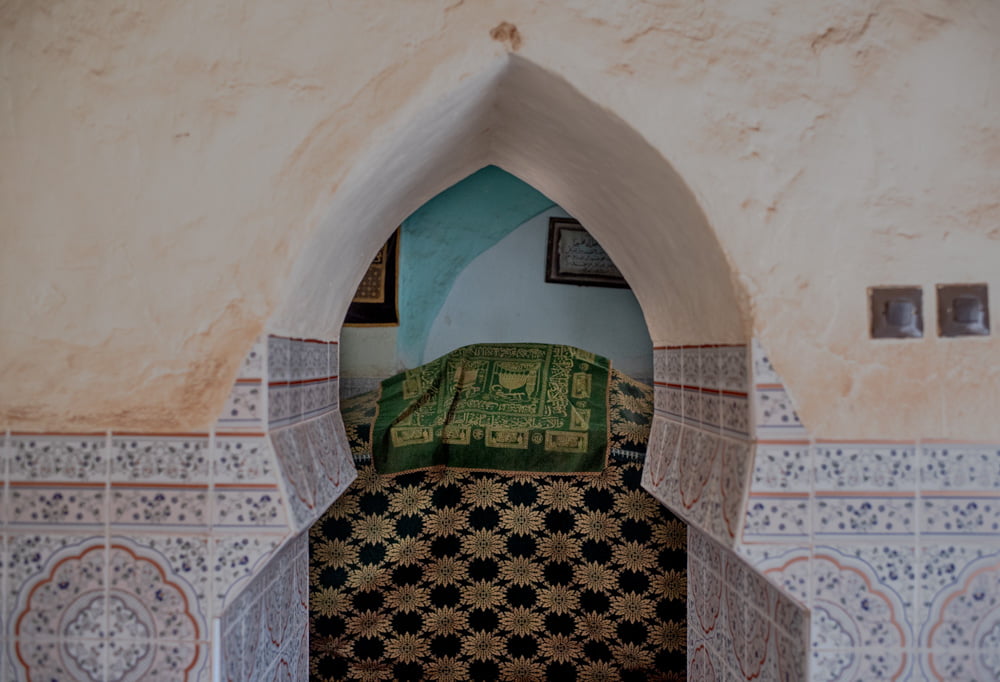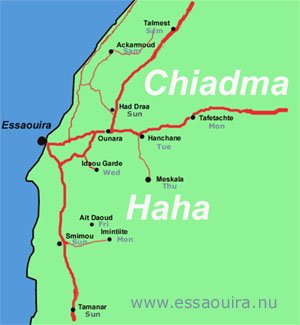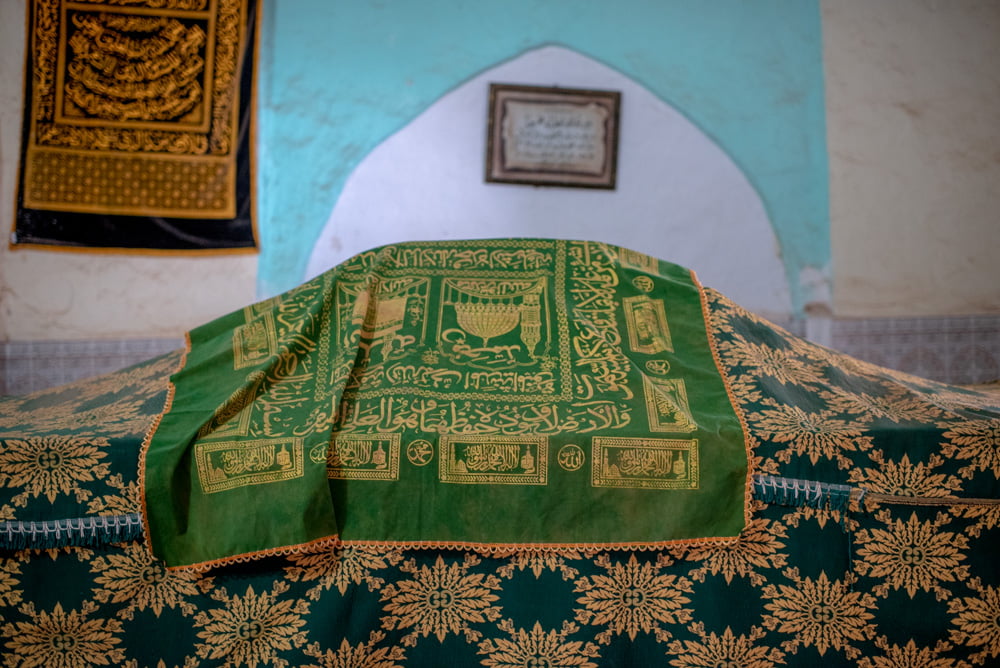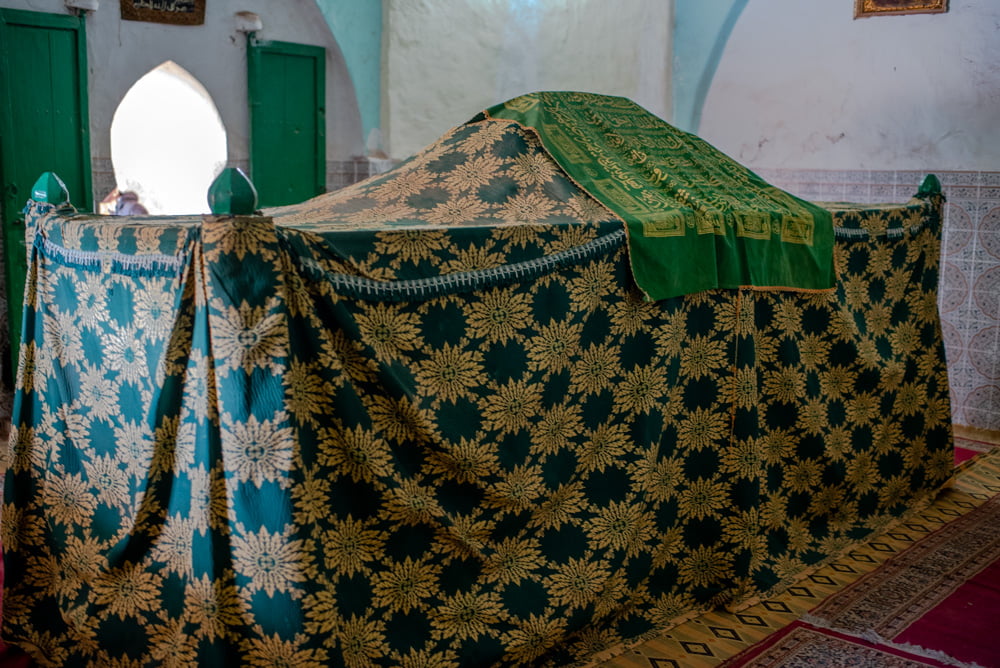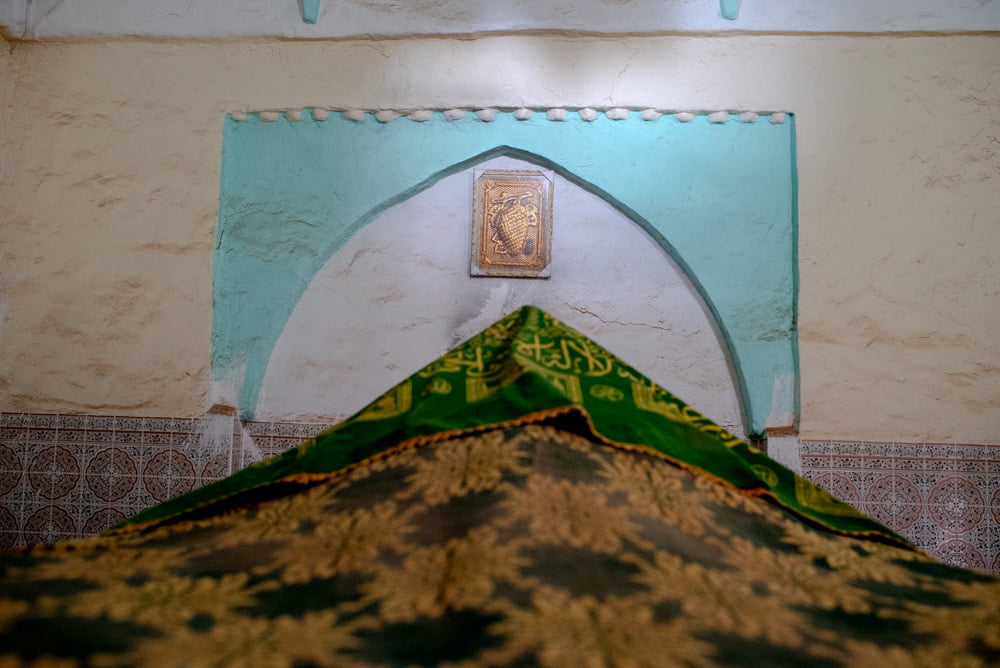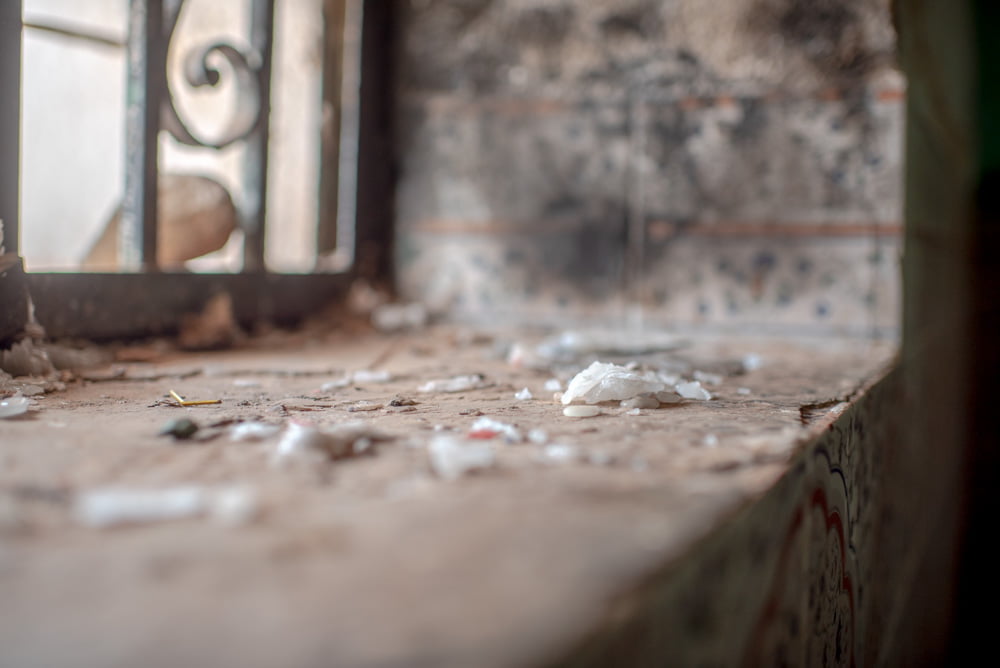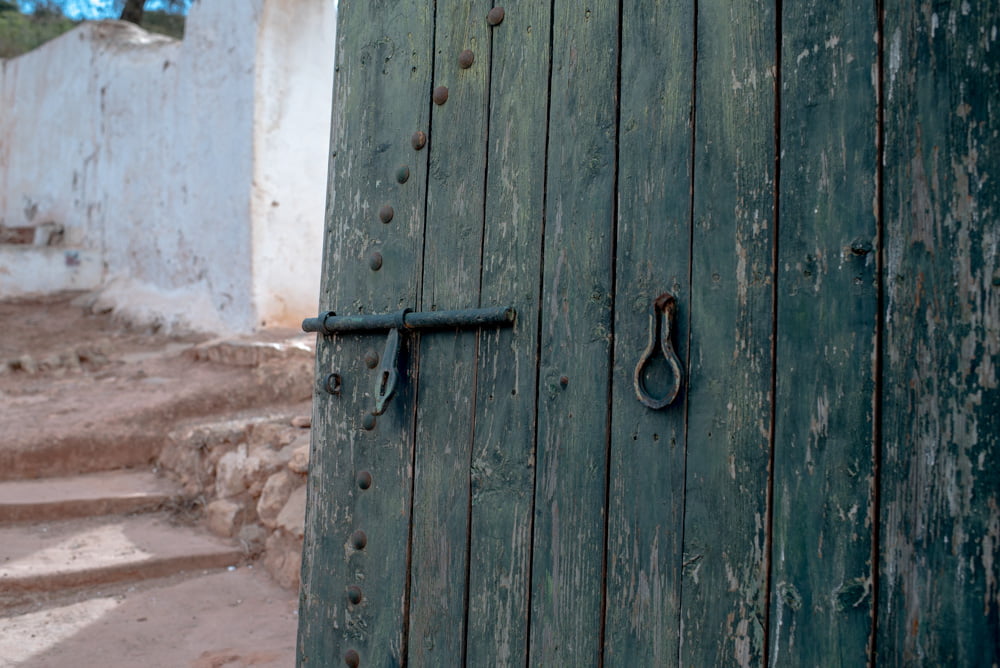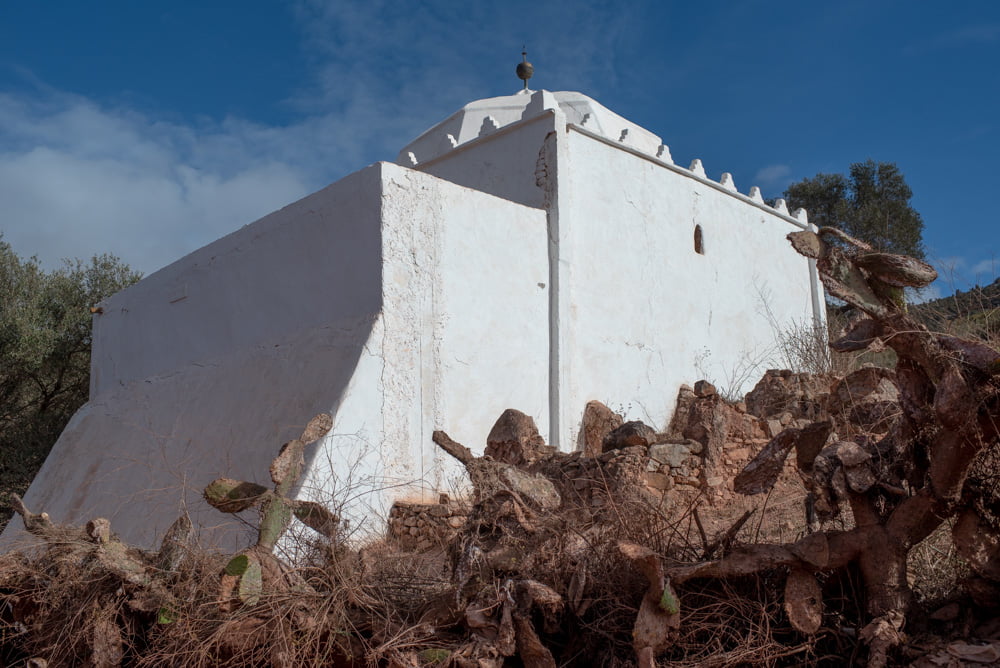The annual pilgrimage around the locality of Essaouira every spring is called ‘ Regraga’, a name which also describes the group of Chorfa ( a darija word denoting noble religious leaders descending from the Prophet Mohamed otherwise known as Sharif ) who make the pilgrimage annually.
The Regragas originate from Chiadma, a region located on the Atlantic coast between Safi and Essaouira in the south of Morocco. They are the descendants of the saint apostles of Islam who, legend suggest, learnt the new religion of Islam on a visit to Mecca. Here they were told by the Prophet to spread Islam to the Maghreb. Every spring (March-April) the descendants carry out a pilgrimage which lasts 39 days and visits 44 sacred places in the region. Pilgrims visit a series of local shrines, from the mouth of the Tensift river south of Safi to the northern outskirts of the High Atlas, including the city of Essaouira .
The Pilgrimage contains two groups; one group stops at every shrine on the way where they build a holy tent of palm fibres which is then dyed with henna. The other group arrives in procession with a moqadem (religious leader) riding a white horse.
The Daour (tour) of Regraga starts in the zaouia of Sidi Abdellah ou Hmad in Akermoud and concludes in Sidi Messaoud Boutritiche in the town of Had Dra .
The khaïma, a sacred tent based on the tent of the nomads, coloured red, is carried on the back of a camel. The tent represents all the 12 Regraga Zaouias. The moqadems (chiefs) of their zaouias use the tent to receive visitors and give them baraka, blessings.
The chief of the Regraga from Akarmoud ( zaouia Sidi Ouesman ) is considered the chief ( Sultan ) of all the Regraga tribes. His zaouia is located just outside of Akermoud on Djebel el Hadid, the holy mountain.
The founding myth recounts that the Berber saints went to Mecca to meet the Prophet Mohammed who mysteriously understood their Berber language. However, his daughter Fatima did not understand a word and suggested that they had arrived rejraja, that is to say, “empty handed“. The Prophet said to her daughter: “You have just given them their name”. He then instructed them to return to Maghreb to bring Islam.
The seven saints obeyed and returned to their Berber country with an oracle from the prophet Mohammed. The tribes were converted en masse and the reputation of Regraga spread widely, well before the first historically attested Arab conquests. They were known as the Companions of Prophet. Each year, the seven holy warriors visited the tribes in the region to ensure that they did not foresake Islam: that is the origin of Daour.
The 7 saints and their locations are:
Sidi Ouasmine, near Akermoud, on a track leading up Djeb el Hadid alt Sidi Ouasmine IliasSidi
Boubker Ben Ashemas, Akermoud, alt Sidi Boubker Achemasse
Sidi Salah Ben Boubker, alt Sidi Aissa Mouloutad.
Sidi Abdallah Ben Salah, at Sidi Bou Brahim, alt Sidi Saleh
Sidi Aïssa Bou Khabia, at S. H.B. Hmaïda, alt Sidi Aissa Boukhabiya
Sidi Yala Ben Ouatil alt Sidi Yala alt Sidi Yaala ben Touil
Sidi Saïd Sabek. alt Sidi Said Essabek
- Sidi Aissa Boukhabiya
- Sidi Yaala ben Touil
- Sidi Saleh
- Sidi Boubker Achemasse
- Sidi Aissa Mouloutad.
The first photograph above shows the plains of the Chiadma region around Akermoud from the zaouia of Sidi Ouasman. The following 2 photographs depicts 2 of the several decorated olive ( zaituna ) trees outside of the zaouia . The first tree overlooks a small mosque and the second is beside the exterior wall of the zaouia.
The entrance door into the zaouia courtyard is depicted in the photograph below. It was a very sunny day and there was much contrast and the photographs are not as good as I would have wished. Also I was aware the clock was ticking with the driver.
The zaouia’s gardien is Hatib, a descendant of Sidi Ouasman. I later sent this photograph to him by WhatsApp. There is a tradition that the gardien receives a little sum of money. There is also a metal money box set into the floor beside the tomb.
There are also traditions to honour saints in their tombs. I will find them again and document them in a later posting.
Zaouias of the 13 Tribes of the Regraga
The zaouias in the diagram correspond to the 13 tribes of Chiadma. These tribes are :
Akarmoud
Ait Sidi Baâzzi (The camel which transports the Khaïma is guided by a member of this zaouia)
Retnana
Taourirte
Boulaâlam
Talmeste
Tikten
Ahgissi
Marzoug
Mramer
Loukrate
Mzilate
Sekiyate
Throughout the region, taking into account all the Tribes, there are 24 zaouias which I am currently finding difficulty in exactly locating. However the main towns throughout the region ( and I cannot yet define which tribe each town is associated with ) are :
Telmest, Ackermoud, Had Draa, Hanchane, Ounagha, Tafetchte, Meskala, Ida Ougarde, Smimou, Imi N’tlit,
Ait Daoud (?)
The Route ( Daour ) of the Annual Regaga
1. Depart Akermoud (Sidi Abdellah ou Hmad)
2. Sidi Ali Ben Bou Ali (Bouâli)
3. Sidi Ali El Kourati (Sidi Alla Krati,Loukrati)
4. Sidi M´hamed ben Abdeljalil (Talmest) Sidi Hamou Ben Hmida
5. Sidi Bou Brahim – Sidi Abdellah Ben Saleh
6. S. H.B.Hmaïda – Sidi Aïssa Bou Khabiya
7. Sidi Ben Kacem (Zaouia Rtnana)(Khémis Oulad El Haj)
8. Sidi Lhoussine Moul Lbab (Zaouia Retnana)
9. Sidi Ishaq
10. Sidi Mansour – Sidi Messaoud
11. Sidi Saleh Ahl – Sidi Abdallah Al Batach(Akermoud)
12. Sidi Boubker Ashemas (Achmasse) – Sidi Abdellah Ou Ahmad (Akermoud)
13. Sidi Boubker Ashemas – Sidi Abdellah Ou Ahmad (Akermoud)
14. Sidi Boubker Ashemas – Sidi Abdellah Ou Ahmad (Akermoud)
15. Sidi Bou Zerktoune (Moula Doraiïne)
16. Sidi Magdoul – The town of Essaouira Diabat
17. Sidi Setta ou Settine – Sidi Ali Saiïh -Sidi Yaâcoub (Jbel Lahdid)
18. Sidi Ouasmine (Jbel Lahdid)
19. Lalla Taourirt
20. Sidi Boulamane (Boulaâlam
21. Sidi Yaâla
22. Sidi Aïssa Moul Louted (Moul Lâahad)
23. Sidi Bou Laâlam – Sidi Hamou Ou Hsine
24. Zaouia Ahl Marzoug
25. Beit Allah – Zaouit Sakyat
26. M’tafi L’haouf (Ntafi Lhouf)
27. Sidi Abdellah Amzil – Sidi Ahmer Chantouf (Zaouit Tikten)
28. Sidi Massaoud Ahwir (Mrameur)
29. Sidi Abdellah Moul L’ghiran- S.Abdennaïm
30. Tafettacht
31. Sidi Larbi Berkhil – S. M’hamed Ben Brahim
32. Sidi Saïd Sabek (Essabeq)
33. Lalla R’qiya Agouidir – Sidi Ali L’kouch
34. Sidi Abdellah Ben Sâid
35. Sidi Abdellah Ben Sâid
36. Sidi Moussa – Sidi Abdellah Ben Wasmine
37. Sidi Abdellah Ben Ouasmine
38. Sidi Ali Ben Mâachou (Messaoud Boutritiche)(Had Dra)
39. Sidi Ali Ben Mâachou (Had Dra)
Exiting the zaouia.
There was no time to obtain a better vantage point for an external photograph. The driver was becoming impatient.

